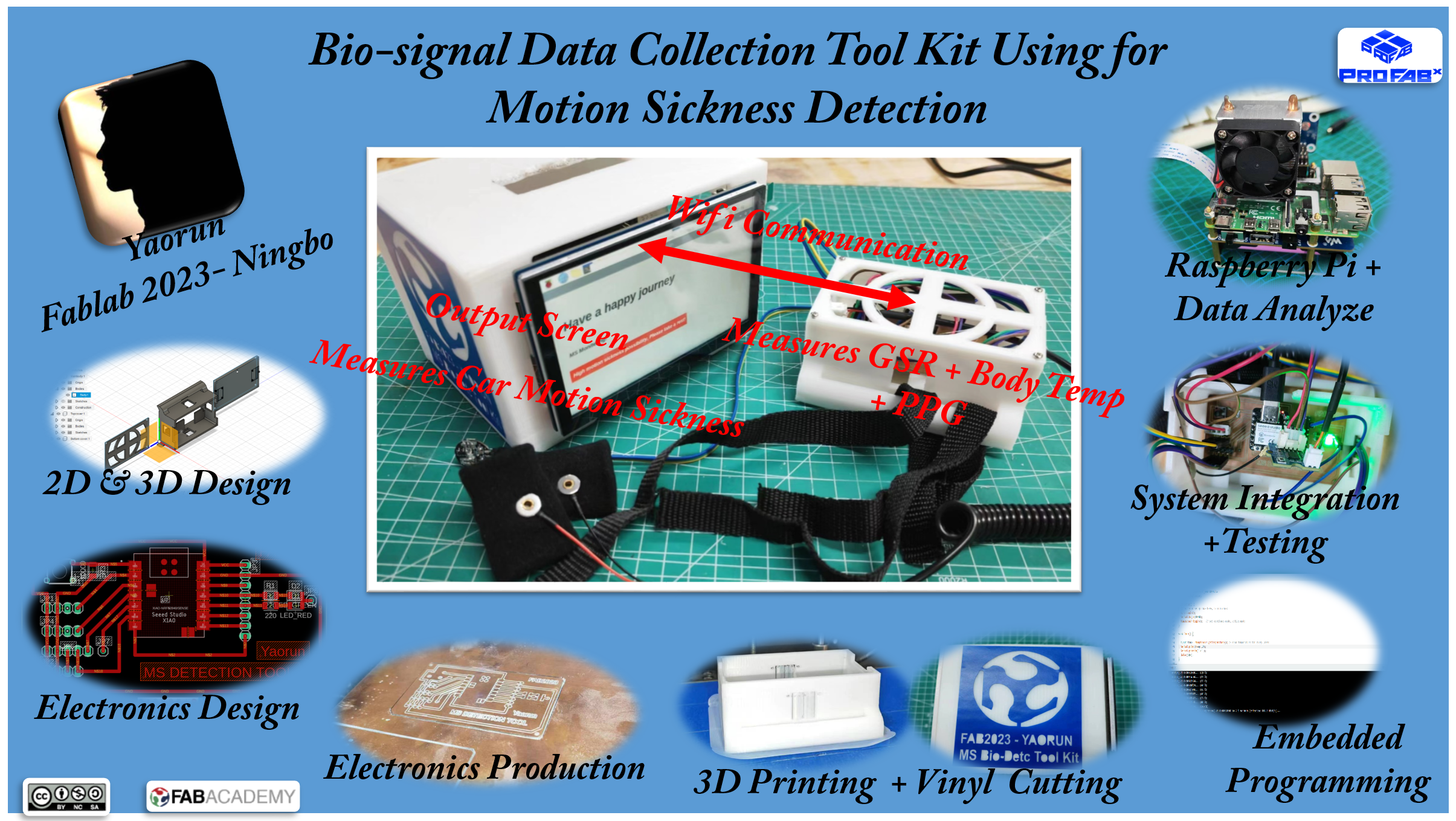Appearance
Invention, intellectual property and income
This week I have developed a plan for dissemination of my final project. I have also prepared my summary slide and video clip for my final project, all documents have been uploaded below. In my final project, I would like to develop a bio-signal data collection and analyzation tool kit that can be further developed for predict the occurrence of motion sickness based on human physiological signals.
Dissemination Plan

Presentations and Demonstrations: Showcase the toolkit at industry conferences and academic workshops related to human-computer interaction, automotive technology, and health tech. This will increase awareness among researchers, practitioners, and potential industry partners.
Open Access Publication: Publish a detailed paper describing the design, functionality, and findings of the project in an open-access journal. This will ensure accessibility for a wider audience and foster interest in further research and applications.
Online Platform and Community Engagement: Create a dedicated project website or GitHub repository to share documentation, technical specifications, and design files. This platform can also include a blog or forum where users can share feedback, ask questions, and propose improvements.
Social Media and Networking: Use platforms like LinkedIn, Twitter, and research forums to share project updates, milestones, and demonstration videos. Engaging with online communities can increase visibility and attract potential collaborators.
Collaboration with Automotive Companies: Establish partnerships with automotive companies to explore real-world applications and gather data for continuous improvement. This may involve pilot testing or beta-testing programs with car manufacturers.
Licensing
Based on the dissemination plan, the recommended licensing would be an open-source license to encourage collaboration, allow improvements, and increase accessibility. The licensing rule applied including:
MIT License: This permissive license would allow others to freely use, modify, and distribute the toolkit, even for commercial purposes, as long as they credit the original creators. It encourages board adoption and contributions from the community, which aligns with the goal of sharing the toolkit widely and fostering improvements.
Apache 2.0 License: This license also allows free use, modification, and distribution, including for commercial purposes, but with added protection against patent claims. It would be suitable if the project has any potential patentable elements or if there’s a need to protect future contributors from patent litigation.
Creative Commons (CC BY 4.0): For non-software parts of the project, like documentation, images, or educational materials, a Creative Commons license would be ideal. CC BY 4.0 would allow users to share and adapt the materials with proper attribution.
Summary slide and video.
Slide:

Video: